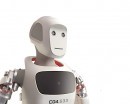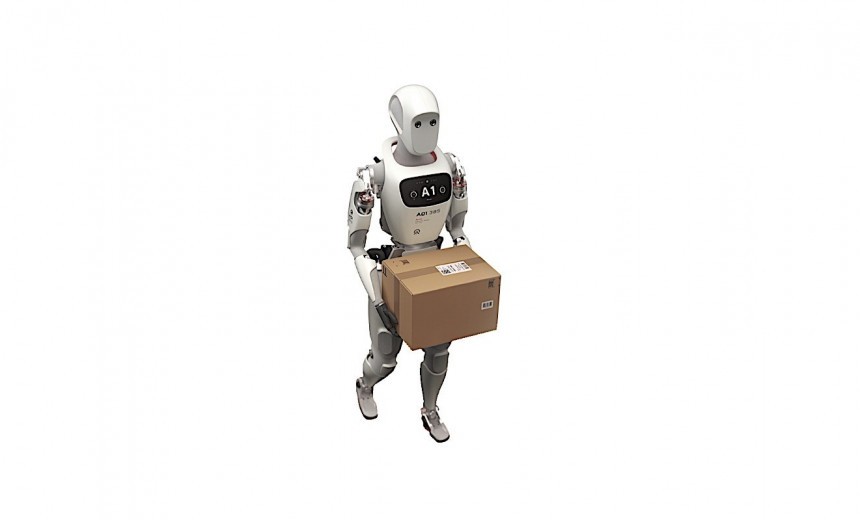Robots of different shapes and sizes have formed a parallel backbone of automotive manufacturing for decades now. Most of them industrial in nature, they are used in various stages of the assembly process, without completely eliminating the need for human workers. But it may soon come a time when humanoid robots will be on the floor of car factories as well, at first doing the work humans dread of doing and later, who knows, perhaps a lot more than that.
As you're reading this there aren't all that many humanoid robots running around doing stuff. In fact, if you really think about it, the world has only a couple such machines, bipedal metal creatures capable of working alongside humans.
The first would be the Valkyrie (R5), a robot put together by NASA's Johnson Space Center for the DARPA Robotics Challenge Trials. Inspired by the space-going Robonaut 2, the thing is about as tall as a tall human (six feet/1.8 meters) and weighs 300 pounds (136 kg).
Valkyrie is currently on assignment in Perth, Western Australia, where it is being put through its paces in the facilities of local oil and gas production company Woodside Energy. And that's a perfect fit for it, as it has been designed to operate "in degraded or damaged human-engineered environments," meaning the ones humans are really unhappy to work in, or find dangerous to some degree.
The second ready-for-duty humanoid robot we know of is called Apollo and it's made by a startup (established in 2016) called Apptronik. Designed to work primarily in warehouses, the robot didn't have until earlier this week any important job to brag about. But that changed after Mercedes-Benz got wind of it and started believing it could find uses for it.
Apollo is perhaps a lot more human than the NASA Valkyrie, as aside from arms and legs (activated by means of linear actuators instead of rotary ones), it also has a face that makes it look a lot less… robot. It too is about as tall as a human, coming in at five feet eight inches (173 cm), but it tips the scales at a much more comfortable 160 pounds (73 kg).
A battery pack of undisclosed capacity is what gives the robot energy for about four hours. When it is depleted, it can be swapped for a fully charged one, essentially making the bipedal creature capable of operating indefinitely.
Apollo has been designed to be modular, meaning it doesn't necessarily have to operate on two feet. It can also be specced as a torso mounted on a wheeled platform or on a stationary stand.
It is however the bipedal version Mercedes-Benz seems to be eyeing. As per a statement released by Apptronik at the end of last week, the German carmaker is now looking at identifying potential uses for Apollo in its carmaking facilities.
Most likely the robot will take on roles in logistics and delivery of assembly kits. What it means is that Apollo will probably be used for physically challenging, low-skill, repetitive, and even dull labor, like bringing parts to the assembly line for human workers to use in their work. The most weight the robot can lift is 55 pounds (25 kg), which is a bit more than what most humans can handle.
And that translates into Apollo mingling with its human colleagues on the factory floor, something Apptronik says it can easily do. A series of sensors and cameras help it avoid obstacles and stop moving when it danger of hitting something. Its face, gifted with two perfectly round eyes and even a mouth, makes it a pleasant apparition.
The robot will communicate with its human peers by means of LEDs installed in the head and chest. When it needs to tell people something, including battery level, the LEDs light up to deliver the required message. There are also digital panels installed in the thing's chest, "approximating a congenial face-to-face exchange with a favorite co-worker."
Mercedes-Benz did not specifically say when and where the Apollo robot will first be used, but we expect to see the machine at work helping people make other machines pretty soon. And its deployment in the hands of such a large company could open the door for an invasion of Apollos in other facilities and industries as well.
That's a likely outcome considering how the robot's brain has been designed in such a way as to accommodate a series of other use cases, even in conjunction with artificial intelligence. Most recently, for instance, the company announced it will be integrating the NVDIA Project GR00T robot learning system into the Apollo, after initial tests showed the machine can learn and autonomously perform task instead of simply repeating what it was taught to do.
Because of this, Apptronik likened the robot to an iPhone: a "world-class, user-friendly hardware that comes with some pre-built applications and can add applications developed by third parties."
The company never mentioned how much the robot costs.
The first would be the Valkyrie (R5), a robot put together by NASA's Johnson Space Center for the DARPA Robotics Challenge Trials. Inspired by the space-going Robonaut 2, the thing is about as tall as a tall human (six feet/1.8 meters) and weighs 300 pounds (136 kg).
Valkyrie is currently on assignment in Perth, Western Australia, where it is being put through its paces in the facilities of local oil and gas production company Woodside Energy. And that's a perfect fit for it, as it has been designed to operate "in degraded or damaged human-engineered environments," meaning the ones humans are really unhappy to work in, or find dangerous to some degree.
The second ready-for-duty humanoid robot we know of is called Apollo and it's made by a startup (established in 2016) called Apptronik. Designed to work primarily in warehouses, the robot didn't have until earlier this week any important job to brag about. But that changed after Mercedes-Benz got wind of it and started believing it could find uses for it.
Apollo is perhaps a lot more human than the NASA Valkyrie, as aside from arms and legs (activated by means of linear actuators instead of rotary ones), it also has a face that makes it look a lot less… robot. It too is about as tall as a human, coming in at five feet eight inches (173 cm), but it tips the scales at a much more comfortable 160 pounds (73 kg).
A battery pack of undisclosed capacity is what gives the robot energy for about four hours. When it is depleted, it can be swapped for a fully charged one, essentially making the bipedal creature capable of operating indefinitely.
It is however the bipedal version Mercedes-Benz seems to be eyeing. As per a statement released by Apptronik at the end of last week, the German carmaker is now looking at identifying potential uses for Apollo in its carmaking facilities.
Most likely the robot will take on roles in logistics and delivery of assembly kits. What it means is that Apollo will probably be used for physically challenging, low-skill, repetitive, and even dull labor, like bringing parts to the assembly line for human workers to use in their work. The most weight the robot can lift is 55 pounds (25 kg), which is a bit more than what most humans can handle.
And that translates into Apollo mingling with its human colleagues on the factory floor, something Apptronik says it can easily do. A series of sensors and cameras help it avoid obstacles and stop moving when it danger of hitting something. Its face, gifted with two perfectly round eyes and even a mouth, makes it a pleasant apparition.
The robot will communicate with its human peers by means of LEDs installed in the head and chest. When it needs to tell people something, including battery level, the LEDs light up to deliver the required message. There are also digital panels installed in the thing's chest, "approximating a congenial face-to-face exchange with a favorite co-worker."
That's a likely outcome considering how the robot's brain has been designed in such a way as to accommodate a series of other use cases, even in conjunction with artificial intelligence. Most recently, for instance, the company announced it will be integrating the NVDIA Project GR00T robot learning system into the Apollo, after initial tests showed the machine can learn and autonomously perform task instead of simply repeating what it was taught to do.
Because of this, Apptronik likened the robot to an iPhone: a "world-class, user-friendly hardware that comes with some pre-built applications and can add applications developed by third parties."
The company never mentioned how much the robot costs.












